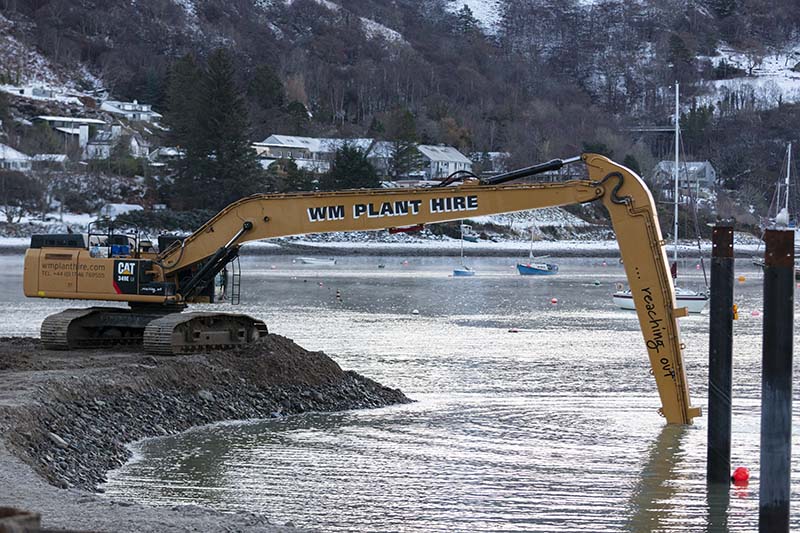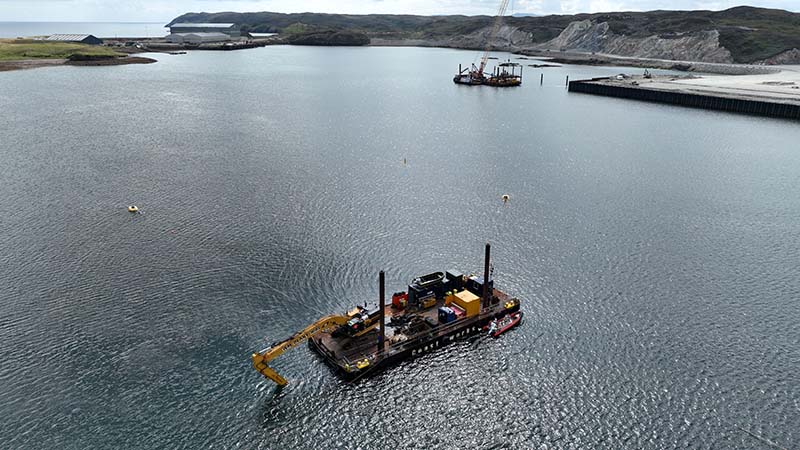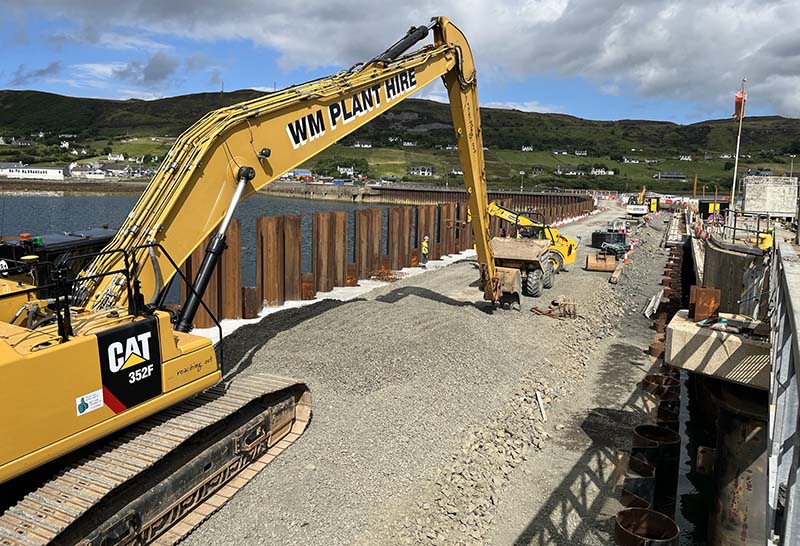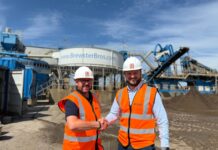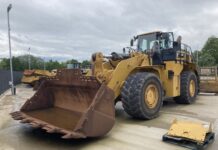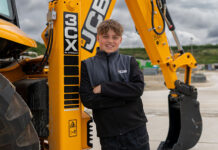WM Plant Hire’s fleet of long reach excavators, ranging from 8-32m, has maintained its support of marine contractors across Scotland over the past year, as the push to develop ports and harbours in readiness for offshore wind development requirements continues.
The company’s diggers, including low ground pressure machines which are ideal for working on soft ground, have been utilised at the onshore Viking Energy Wind Farm in Shetland. However, more recently they have been reaching into the depths with heavy-duty excavators called into action as part of Uig and Lochmaddy ferry terminal upgrades as well as Stornoway Deep Water Terminal.
The multi-purpose facilities in Stornoway will provide a berth for vessels up to 360m-long with a water depth of 10m below chart datum and new ferry berth; delivering support for renewable energy developments and helping establish Stornoway as a cruise destination.
The 24m reach provided by the Cat 374 helped contractors McLaughlin & Harvey perform basic dredging operations, but also more crucially complex underwater demolition of an ancient coal hulk. The SS Portugal, which had sunk in the navigation channel to the harbour back in 1953, needed to be removed to achieve necessary clearance depths for the deep water terminal. Fitted with an orange peel grab and multi-processor, the long reach helped cut apart and remove the hulk safely, section by section.
Following on from the company’s work with RJ McLeod on the Ullapool Harbour improvements last year with 45 and 65-tonne long reach models, WM Plant Hire is continuing to collaborate with marine contractors in upgrading ferry terminals at Uig and Lochmaddy. At Uig, a Cat 352 20m long reach was utilised by RJ McLeod in the construction of the replacement linkspan and breakwater structure, while at Lochmaddy George Leslie took advantage of the machine’s impressive reach to carry out dredging operations.
WM Plant Hire can also provide an excavator where ground is uneven and unsuitable for a tracked machine – namely the ‘Spider’ with independent legs and floatation tyres. These Spiders, weighing up to 16 tonnes, can handle heavy attachments and provide a solution for coastal defence projects where limited access and tidal restrictions may prove problematic.
Committed to helping clients achieve net zero targets, investment has continued in Stage V engine machines across the fleet, including a new Spider with inbuilt winch, which the company stated is ideal for use on steeper slopes as a secondary fail safe.


